Understanding the True Role of a Scrum Master
Explains the true responsibilities of a Scrum Master, how to maximise team effectiveness, teach Scrum principles, and address organisational …
Deliver valuable, usable products through iterative learning, customer feedback, and continuous improvement. Align strategy, discovery, and delivery to maximise outcomes and reduce risk.


Product Development is the systematic process of delivering valuable and usable products through iterative learning, customer feedback, and continuous improvement. It encompasses the alignment of strategy, discovery, and delivery to maximise outcomes while minimising risk. This concept is crucial as it enables teams to respond effectively to changing market demands and customer needs, fostering an environment where innovation can thrive.
By integrating practices from Agile, Lean, and DevOps, Product Development promotes a culture of collaboration and transparency, allowing cross-functional teams to work cohesively towards shared goals. It emphasises the importance of understanding customer feedback loops, which inform product iterations and enhancements, ensuring that the end product not only meets but exceeds user expectations.
The long-term, systemic nature of Product Development means that it is not merely about delivering a product but about creating a sustainable framework for ongoing value delivery. This approach encourages teams to embrace experimentation and learning, leading to improved efficiency and effectiveness in product delivery. By focusing on continuous improvement and adaptability, organisations can cultivate resilience and maintain a competitive edge in an ever-evolving landscape. The emphasis on value delivery ensures that every effort contributes meaningfully to the organisation’s strategic objectives, reinforcing the importance of a well-defined Product Development process in achieving long-term success.
Explains the true responsibilities of a Scrum Master, how to maximise team effectiveness, teach Scrum principles, and address organisational …
Explores how rigid, hierarchical structures hinder organisational agility and offers practical strategies for shifting to decentralised, empowered, …
Establishing team norms and collaboration principles for effective teamwork.
Explores how immersive learning in product management blends practical assignments, evidence-based metrics, and reflection to drive real …
Explores why Scrum's "twice the work in half the time" claim is misleading, emphasising value over output and the importance of realistic expectations …
Explores whether Scrum Teams should adopt No Estimates, comparing estimation methods, team maturity, and metrics like cycle time, throughput, WIP, and …
Explains when agile consulting is best used, highlighting its role in building internal leadership, rapid problem-solving, and sustainable …
Scrum Masters need technical, business, and organisational skills to guide teams, remove obstacles, drive value, and lead effective agile …
Learn how Evidence-Based Management helps organisations measure delivered value using key metrics like customer satisfaction, employee engagement, and …
Explores the impact of communication gaps in Agile teams, their causes and consequences, and offers practical strategies to foster open, effective …
Learn practical steps for Agile teams to address ineffective Product Owners, including support, education, relationship-building, and fostering team …
Explores how patience and trust foster effective Agile teams, support learning from failure, prevent blame culture, and enable innovation through …
Learn how to reduce chaos in Agile teams by improving alignment, setting clear goals, fostering open communication, and using visual tools for better …
Explores why Scrum is challenging to master, highlighting cultural barriers, the importance of transparency, and the gap between understanding and …
Learn how to apply Kanban at the organisational level to optimise workflow, improve predictability, and make data-driven decisions across multiple …
Summarises key changes in the 2020 Scrum Guide, including simplified language, self-managing teams, and new commitments for goals, backlog, and …
Guidance on addressing issues with multiple Product Owners in Scrum, highlighting the need for clear backlog ownership and accountability to ensure …
Explore how immersive, double-loop learning in Professional Scrum Master training helps Scrum Masters apply theory, reflect, and collaborate to solve …
Explores why scaling product development requires system improvements, not just more developers. Covers alignment, technical debt, and feedback loops …
Sprint planning is a collaborative session where teams define and align on goals, tasks, and priorities for the next sprint, ensuring clarity and …
Learn how to identify a great sprint goal by recognising signs of team excitement, curiosity, and engagement, ensuring your Agile sprints inspire …
An approach to understanding and managing organisations, systems, and uncertainty using complexity science, emergence, and nonlinear dynamics. Incudes …
Copying scaled agile frameworks fails because each business needs a tailored, evidence-based approach to agility that fits its unique culture, …
Explores how the APSPOA course equips product owners and leaders with tools and techniques to shape product direction and develop key Agile leadership …
Learn how Agile principles help businesses improve predictability by addressing challenges, optimising systems, aligning goals, and adapting to change …
Explains why recessions are ideal for organisations to adopt agile, highlighting adaptability, rapid learning, and customer-focused growth in …
Explains the sprint goal in Scrum as a clear, tactical objective for each sprint, guiding team focus, enabling actionable feedback, and linking daily …
Real-world experience with teams is essential for Agile coaches, providing credibility, empathy, and practical insight needed to effectively guide and …
Learn essential Scrum Product Backlog management skills, including stakeholder engagement and data-driven decision-making, to boost team effectiveness …
Evidence-based management uses data-driven decisions to help organisations achieve business outcomes, adapt to market changes, and maximise value …
Explores the real-world challenges and expanded responsibilities of product owners, highlighting practical skills, agile leadership, and collaborative …
Explains how to maintain clear, measurable quality standards with the Definition of Done, while avoiding confusion with acceptance criteria and …
Explores how humility strengthens Agile teams by fostering trust, collaboration, openness to feedback, and better decision-making through reduced bias …
Explore expert insights on product ownership and lean product development, featuring real-world examples, practical strategies, and an interactive Q&A …
A product backlog is a prioritised list of features, tasks, or improvements that guides Agile teams in planning, collaboration, and delivering product …
Explores how addressing technical debt boosts innovation, team morale, and value delivery by enabling agile development, better products, and …
Explores how relying on story points and velocity can harm Agile teams, advocating for objective metrics like cycle time and throughput to boost …
Explains why story points are often misunderstood in Scrum, clarifies their intended use, and offers practical advice for more effective Agile …
Learn key signs of failing as a product owner, including poor product quality, lack of vision, and inconsistent delivery, plus practical steps to …
A skilled product owner drives teams to build valuable solutions, anticipate customer needs, and deliver features that create real business impact, …
Explores how immersive, hands-on learning keeps Scrum students engaged and excited, supporting continuous improvement, real-world application, and …
Explores how unchecked pride can harm Agile teams, stressing data-driven decisions, learning from failure, and balancing confidence with humility for …
Explores how practising moderation in Agile, by keeping backlogs lean, limiting work in progress, and focusing on value, boosts team efficiency and …
Explores why burndown charts can limit Agile teams, highlighting the drawbacks of fixed planning and advocating for adaptability, empirical work, and …
Explains the product owner's role in Scrum, focusing on accountability for maximising value, aligning teams with strategy, and ensuring unified …
Explains why continuous learning is essential for product owners, highlighting key tools, practical advice, and strategies to stay effective and ahead …
Learn the three core Kanban principles, visualising workflow, actively managing tasks, and continuous improvement, to boost team efficiency, …
Explains how Kanban visualises workflows, tracks metrics, and supports continuous improvement, helping teams identify bottlenecks and enhance …
Learn how to fund product development by thinking like a venture capitalist, run small experiments, validate ideas, manage risk, and balance data with …
Gain practical Kanban skills through live sessions and real-world practice, covering workflow design, flow metrics, visual boards, and continuous …
Explains the Sprint Backlog as a transparent, flexible plan in Scrum, combining goals, tasks, and strategy to help teams stay focused, adaptable, and …
Explores how deeper user understanding, data-driven decisions, and stakeholder collaboration lead to more effective, user-centred software development …
Explores how immersive learning in Agile and Scrum helps overcome cognitive bias, promotes hands-on practice, and supports continuous improvement for …
Learn how the Professional Scrum Product Owner course builds agile skills, practical product management, and ongoing support for effective product …
Explores how probabilistic forecasting improves software project planning by replacing traditional estimation with data-driven confidence levels for …
Explains how Scrum teams create effective sprint goals by aligning product strategy, tactical needs, and backlog priorities to deliver stakeholder …
Learn why regularly evaluating your direction is vital for developers, product owners, and organisations to ensure goals, features, and strategies …
Learn key negotiation skills for Product Owners to manage stakeholders, balance priorities, and maximise product value through effective communication …
Explores how Product Owners can use marketing skills to communicate vision, boost team and stakeholder engagement, and align feedback for successful …
Learn how Kanban’s pull-based system boosts workflow efficiency by visualising tasks, setting WIP limits, managing bottlenecks, and enabling …
We partner with businesses across diverse industries, including finance, insurance, healthcare, pharmaceuticals, technology, engineering, transportation, hospitality, entertainment, legal, government, and military sectors.

Jack Links

ProgramUtvikling

Philips

Deliotte

Akaditi

Sage

Big Data for Humans
NIT A/S

Slaughter and May

Kongsberg Maritime

Flowmaster (a Mentor Graphics Company)

Graham & Brown

Cognizant Microsoft Business Group (MBG)

Microsoft

Epic Games

Lockheed Martin

New Signature

Brandes Investment Partners L.P.

New Hampshire Supreme Court

Washington Department of Enterprise Services

Department of Work and Pensions (UK)

Royal Air Force

Ghana Police Service

Washington Department of Transport

Teleplan

Genus Breeding Ltd

Hubtel Ghana

Workday

Jack Links

Emerson Process Management